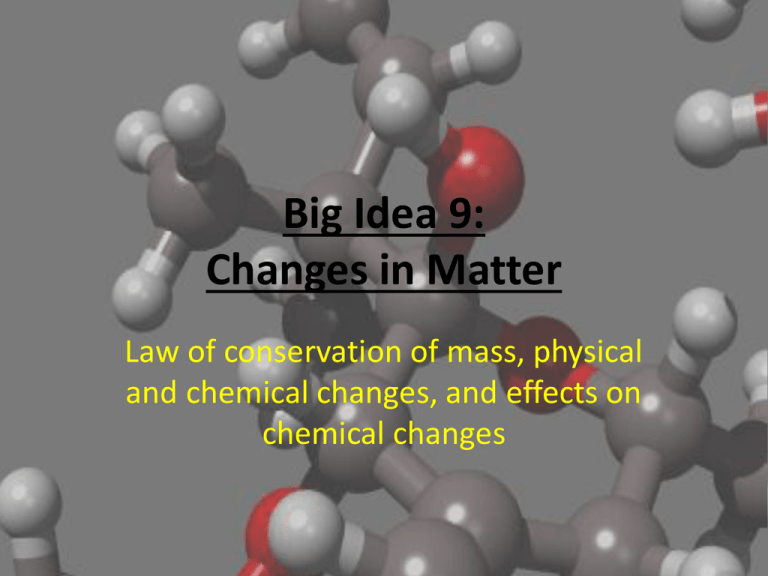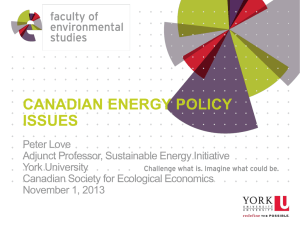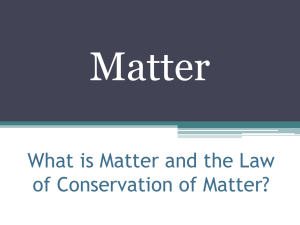Big Idea # 9 * Changes in Matter
advertisement

Big Idea 9: Changes in Matter Law of conservation of mass, physical and chemical changes, and effects on chemical changes • SC.8.P.9.1 Explore the Law of Conservation of Mass by demonstrating and concluding that mass is conserved when substances undergo physical and chemical changes. • SC.8.P.9.2 Differentiate between physical changes and chemical changes. • SC.8.P.9.3 Investigate and describe how temperature influences chemical changes. Physical Changes • If an object/substance goes through a physical change, it means one of its physical properties (see Big Idea 8) has been affected. For example, if you have a bottle of water and place it in the freezer, over time the water inside the bottle will turn into a solid. The frozen water in the bottle is still water, it is just in another phase. If you warm that bottle up, you will have liquid in the bottle just as you started off with. • The key to recognizing a physical change is that the change can be reversed and the original substance can return to its original shape and size. When a substance goes through a phase change (freezing/melting, boiling/condensation, sublimation), it is considered to have gone through a physical change. Chemical Changes • Chemical changes alter the structure of the substance and create new substances with different properties than the original. Flammability, for example, is a chemical property. If a piece of paper burns, there is no way to take the ashes and the smoke that escaped, put it back together, and get the original piece of paper back. • Unlike physical changes, the key to recognizing a chemical change, is knowing that the original substance cannot be brought back after the change has occurred. HELPFUL LINKS: • http://www.chem4kids.com/files/m atter_chemphys.html • See Big Idea 8 – 8th grade Law of Conservation of Mass Whether a substance goes through a physical or chemical change, the Law of Conservation of Mass always exists. Law of Conservation of Mass • The Law of Conservation of Mass simply states that when a substance goes through a change, the mass of the substance before will always equal the mass of the products after the reaction. • The volume may change, but the mass shall remain the same. The mass of an ice cube should equal the mass of the liquid water after it melts. • In order to prove this law, the physical or chemical reaction must be conducted in a closed system. In a closed system, interference with outside sources can be eliminated. HELPFUL LINK: http://homepage.mac.com/sklemmer/Essentials%20I/co servationlab.htm Knowledge Check 1. Explain the difference between a physical and chemical change. 2. Give an example of both a physical and chemical change. 3. State the Law of Conservation of Mass. 4. Give an example which follows the Law of Conservation of Mass. Knowledge Check 1. Explain the difference between a physical and chemical change. • • Physical – can return the object back to its original state. A new substance with different properties is created 2. Give an example of both a physical and chemical change. • Physical change= freezing, melting, boiling, etc.. • Chemical change = flammability, reactivity to acids 3. State the Law of Conservation of Mass. • Mass cannot be created or destroyed; it just changes form or is transferred to another object. 4. Give an example which follows the Law of Conservation of Mass. •If you have 10g of liquid water and you freeze it, the ice cube will have a mass of 10g.






